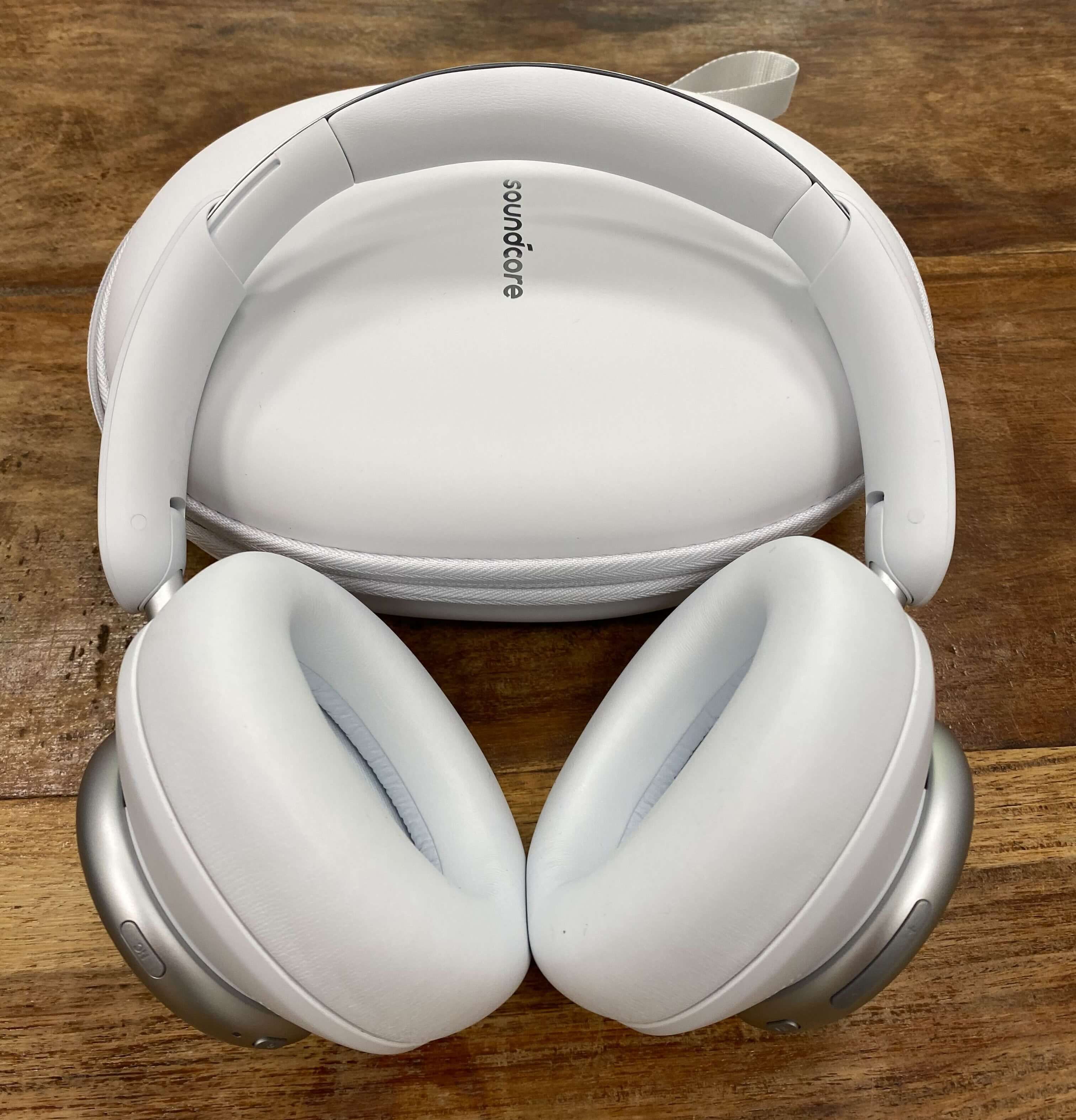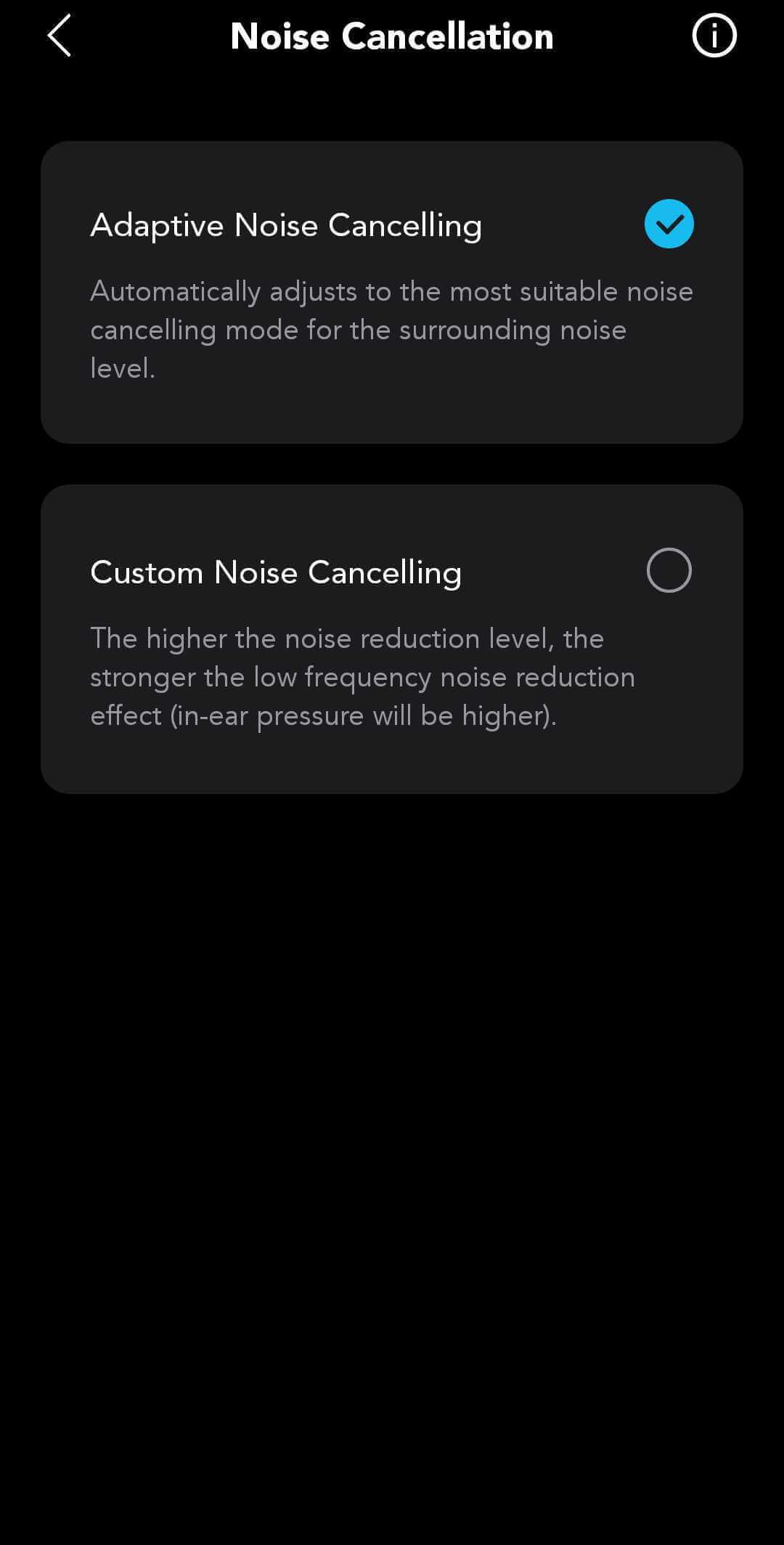Review: Soundcore Space Q45 headphones – a great listening experience, even if the sound is a little inconsistent
Looking for a new pair of headphones? Soundcore’s closed-back Space Q45 over ear headphones may be for you, but after trying these cans out for size… I think the music you listen to regularly will determine your listening experience.
Soundcore released its first speaker back in 2014, and since then the company has gone onto create some award winning headphones. The brand also has audio-enabled glasses – Soundcore Frames!
This week, I’ve been lucky enough to try out the manufacturers’ Q45 noise cancelling headphones which sit at the top of its Space series of headphones with a price tag of £139.99. I’ve been pleasantly surprised by much of what these cans can do, but I’ve felt a little underwhelmed at times too.
There’s a few things to talk about here. For one, these headphones have active noise cancelling, wired & wireless connectivity, an app that gives you flexible control, and you can answer calls without touching your phone!. Let’s dig into it…
Soundcore Space Q45 rating: ⭐️⭐️⭐️⭐️
What comes in the box?
- Soundcore Space Q45 headphones
- USB-C charging cable
- 1/8″ aux cable
- Carry case
Soundcore Space Q45 headphones overview
Available in black or white, the Space Q45 headphones are a stylish pair of over ear headphones. Weighing in at 0.65 lbs, they’re a little chunkier than some may like but the cups will sit over your ears comfortably. They don’t clamp down too tightly and the padding feels soft on your skin too.
The Q45 wireless headphones use Bluetooth 5.3 for wireless connections but also feature a 1/8″ aux input which Soundcore provides an aux cable for. I’m a big fan of how the company gives you the option to listen to music through a cable or Bluetooth, so a big thumbs up there.
Furthermore, the Q45 headphones allow you to connect up to two devices at once. I admit I don’t really see much of a use for this, but I have connected both my phone & work computer to the headphones at once and the process is seamless.
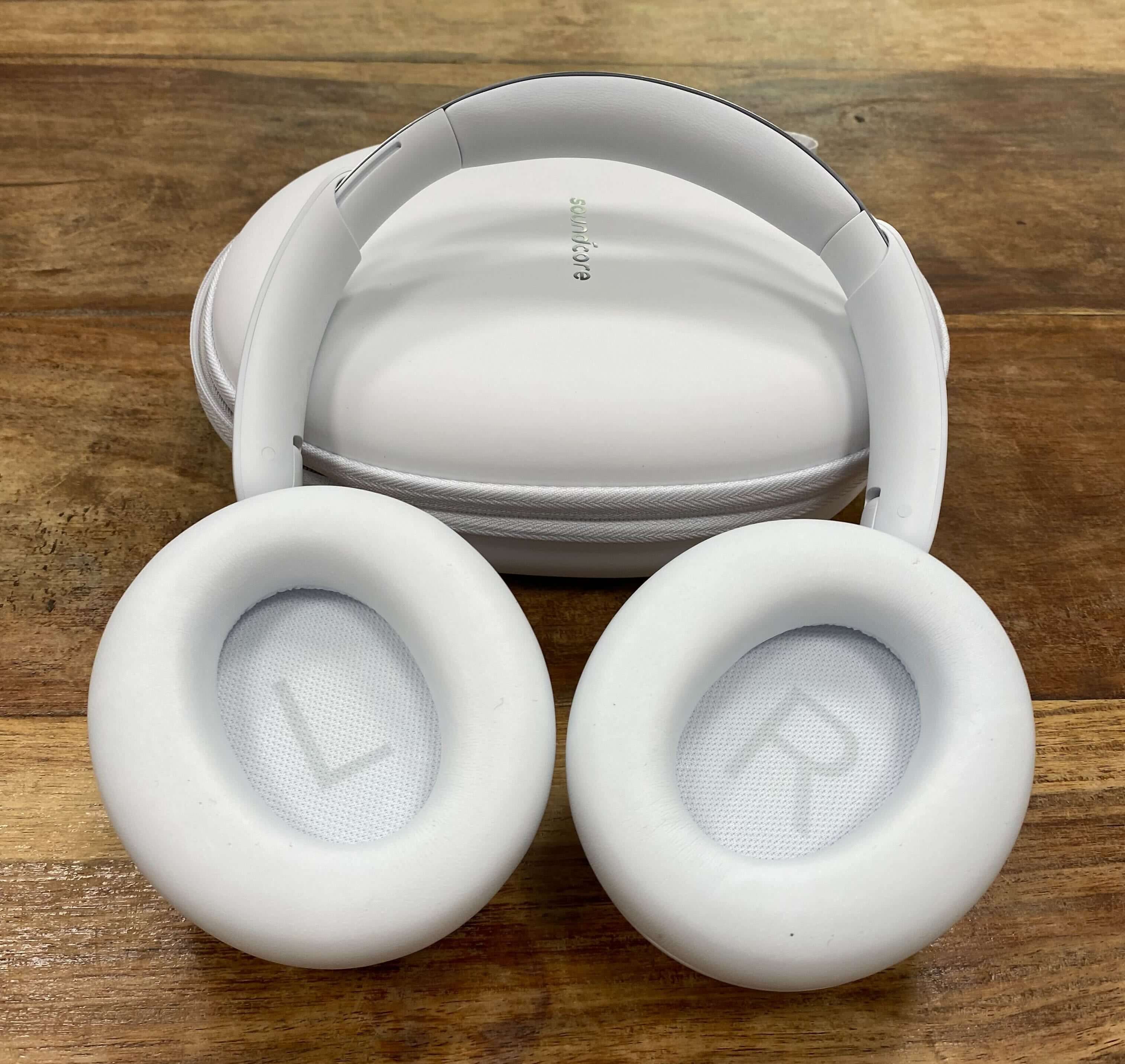
Additionally, the ear cups fold up into the headband for easy transport, and each ear cup is labelled “L” & “R” respectively while a few buttons sit on the outside of the ear cups. On the left cup is the on/off button and the button for flicking through the NC (noise cancelling) modes, in addition to the USB-C charging port. Meanwhile, buttons on the right cup include the play/pause button and the volume control (+ / -).
One thing I would like to mention is how frustrating I found it when I accidentally pressed any of these buttons while rearranging the cans on my head. This might just be a me thing because I don’t use wireless headphones with onboard controls, but I found that I’d accidentally switch the NC mode or pause the music while trying to shift the headphones back up my head!
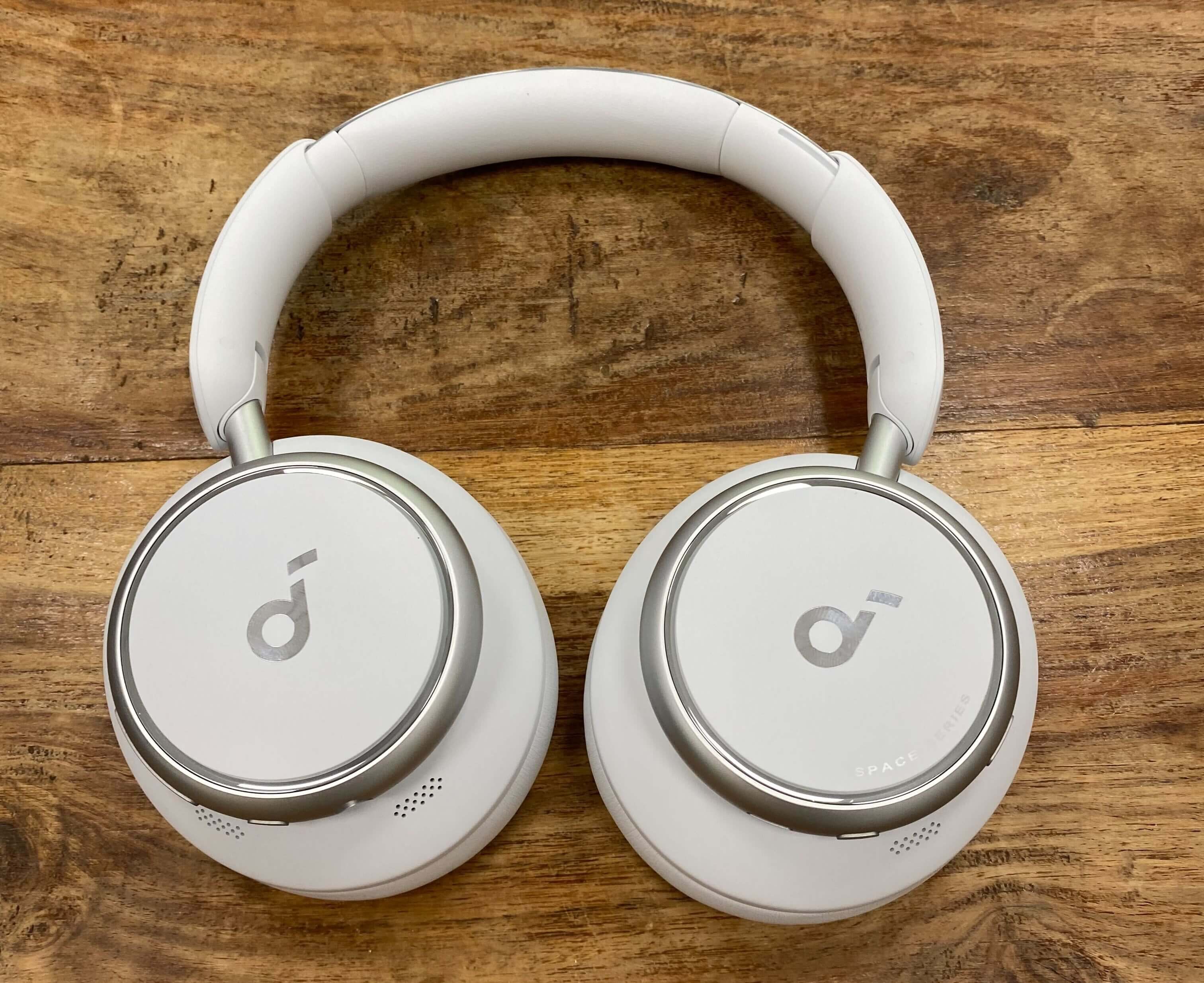
Nonetheless, all of these buttons function as you’d expect, but I need to talk about the NC button in a little more depth. The Q45 headphones have three noise cancelling modes: ANC (Active Noise Cancelling), Transparency, and Normal.
ANC overview
The first, which is the default setting, activates the headphones’ noise cancelling. The second disengages the headphones’ capability of sampling your environment altogether so you can hear your surroundings or have a conversation while wearing the headphones (which some may say is quite rude of you). The final mode, though, means the headphone are behaving as normal headphones. They’re not cancelling any noise, but they’re not working to help you hear your surroundings either.
That’s all good, but if you’re like me and your patience for technology is easily tested then you don’t want to wrestle with a button. That’s where the Soundcore app comes in very handy because it makes it super easy to flick through the ANC modes on your phone, but I’ll talk about the app at the end.
Wearing the headphones
As someone that wears glasses, I was impressed by how comfortable the Q45 headphones feel over long listening sessions. Soundcore has used synthetic leather on the ear cups which is pretty standard for headphones in this price range. It’s worth noting that this material will make your ears sweat while on long walks in the sun or while exercising, but if you’re not easily deterred by bodily fluids then you’ll have no problems there.
The headphone casing is made entirely of plastic while the headband is the only metal component of the build. Nevertheless, the headband is freely adjustable so the cans will fit both smaller heads like mine and larger noggins.
Connecting the headphones
I’ve used the Q45 headphones to listen to music from my computer & my smartphone, and the Bluetooth connectivity has not given me any problems at all. Naturally, there is a little bit of noticeable latency between my command input on Spotify or Soundcloud before the headphones receive the command, but it’s no more than half a second or so.
Audio quality
Now living through my 25th year, I have become someone who listens to “all kinds of music”, including heavy metal & classical. And to give you the most rounded review of the Q45 headphones, I wanted to see how they faired playing “all kinds of music”.
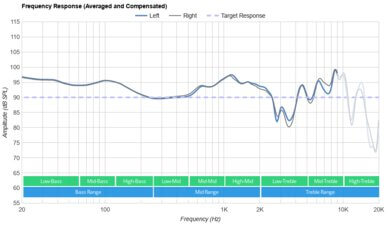
Bass heavy electronic music
I started my audio journey listening to some bass-heavy electronic music. The dynamic drivers inside the ear cups mostly produced a warm low-end with crystal clear highs, but the bass was slightly boomy in some places which felt pretty unbalanced. It certainly wasn’t enough to ruin the experience for me, but it’s a noticeable difference to what I’m used to in my Yamaha MT8 headphones.
Meanwhile, the Q45 headphones give you a “BassUp” feature if the bass is lacking. Here, you can turn the bass up by activating the feature in the app which I will come back to. What I will say now about it here, though, is how it does add considerable weight to the low end of tracks.
Ultimately, I enjoyed listening to bass music in the Q45 headphones, but I know it could be done better. The BassUp feature often made the bass a little too boomy, but I think that’s because it was unnecessary for it to be switched on in the first place.
Metal & rock
After I listened to some bass-heavy electronic music, I ventured into some math rock before playing some metal. I can’t express in words how clean the math rock sounded, with the quick guitar plucks & melodies having enough space to breathe as the drum kit popped through. However, it was when I played some heavy thrash metal from the 90s & early 2000s that the Q45 headphones started to show their weaknesses.
Of course, metal music from this era was often quite compressed because there were a lot of thick guitar tones and bass that a producer had to fit in a finite dynamic range with vocals and so on. Though the kick drums sounded a little weak without the BassUp feature engaged, everything sounded much more balanced when the bass was turned up… though the bass was a little too boomy a lot of the time. The kicks shined through a lot more with the bass up, but they often sounded as if they had been isolated with a filter which I wasn’t so keen on.
While the level of compression is noticeable to a trained ear, the mids and highs are still fairly clean. But once I threw on some nu metal & progressive rock from the same era, the headphones came through once again. Harmonies shined, drums snapped, instruments & vocals had space, and all was well again.
Pop & hip hop
I respect that the genres I’ve so far discussed are fairly niche, but I listened to these genres first because of that very reason. But the Q45 headphones really started to show me their strengths when I began to play some pop & hip-hop. In short, I think these headphones are best suited to pop music listeners over any other style of music.
Every pop song I played sounded clean. The vocals had space, the instruments delivered clean melodies & groovy rhythms while the drums snapped through the mix without demanding too much attention, and the bass was equally clean and warm.
As for my experience while listening to hip hop, what I noticed was the amount of bass in a track played a key role in the quality of the reproduction. For instance, the bass was overly boomy while listening to some busy boom bap, even with BassUp disengaged, while the whole mix sounded clean & balanced when I played some more chilled, lofi inspired hip hop.
Audio quality: conclusion
In summary, the Q45 headphones produce fairly balanced mids and crystal clean highs, but the bass is often over-emphasized while ANC is engaged. In contrast, the low end loses a lot of its emphasis while the headphones are in Normal or Transparency NC modes, though the BassUp function does add a lot more weight to the low end in these modes.
Nonetheless, the audio quality is good for the most part. It could be improved with more consistent quality across different genres of music, and I think the headphones could be massively improved if the noise-cancelling modes didn’t affect the quality of audio so dramatically.
Noise Cancelling in practice and how it affects audio quality
Earlier, I said how the Q45 headphones have three different noise cancelling modes – ANC, Transparency, and Normal. First, I’ll talk about the ANC itself, which Soundcore promises “up to 98% noise reduction”, and I can say it’s not far off the mark.
To test the ANC out, I took the headphones for a little walk on a busy industrial road on my way to a busy supermarket. And, honestly, I couldn’t hear any car rumbles or anything in the store except for the music I was playing in the headphones (except for a little bleed from one customer announcement broadcasted around the store)…
Furthermore, switching from transparency mode to ANC while sitting in RouteNote headquarters where we’re all clicking and clacking with our mice and keyboards is quite surreal. With transparency mode on, these clicks & clacks infiltrate the ear cups easily and it’s almost intrusive. But with ANC engaged… near silence! Therefore, I have to give the ANC many thumbs up.
Now that we’ve covered the good, let’s talk about something a little bit negative. With ANC engaged, in-ear sound pressure gets stronger – and this is why the bass gets boomy when listening to bass-heavy music. But I will say that it still sounds good – the increase in low-end pressure, while ANC is engaged, offers a fuller sound than the other two modes, but it can get a little overwhelming at times.
On the flip side, the bass actually becomes pretty underwhelming with Normal or Transparency mode engaged! I would go as far as to describe the sound as a little empty in comparison because the bass sounds overly full with ANC engaged but almost non-existent when it’s not. But, of course, the “BassUp” feature is designed to account for this. It does a good job, but it can make the bass a little boomy on certain tracks!
In my opinion, this is a huge problem because there is no happy middle ground at all. So, if you’re like me and you listen to a lot of bass-heavy music then the Q45 headphones may not be your best choice.
While it is good, the audio quality of the Q45 headphones just doesn’t stand up compared to my Yamaha HPH MT8 studio headphones, except for pop music. So, if you’re a devoted fan of pop music then the Q45 headphones are an excellent choice for you, but the headphones just don’t deliver consistent quality when listening to punk, metal, and bass-heavy music in general.
With that said, the highs are mostly crystal clear no matter what style of music is playing, and the mids deliver more consistent results than the low-end for sure.
Battery life
Soundcore promises that the Space Q45 headphones offer a battery life of up to 50 hours, and this seems right to me. After one charge, the headphones are still going with my computer saying they’ve got 70% of life left after a few days of usage while working and walking! Another fantastic positive for me.
Ultimately, the Space Q45 cans are a great choice for long-distance journeys. Coupled with their fantastic noise cancelling, their long battery life will easily see you through your long flights & journeys.
Wireless calls
A huge selling point for many when choosing wireless headphones is call quality. And I can say with a smile that the Space Q45 headphones deliver excellent call quality. With one of us outside & the other inside, my colleague & I could hear each other clearly. ANC came into play here too, making my surrounding environment almost silent – making it super easy to hear every word through the headphones.
Soundcore app
The final thing I want to talk about is the Soundcore app which accompanies the wireless headphones. Here, you have access to a number of features, including ANC modes, volume metering, and more.
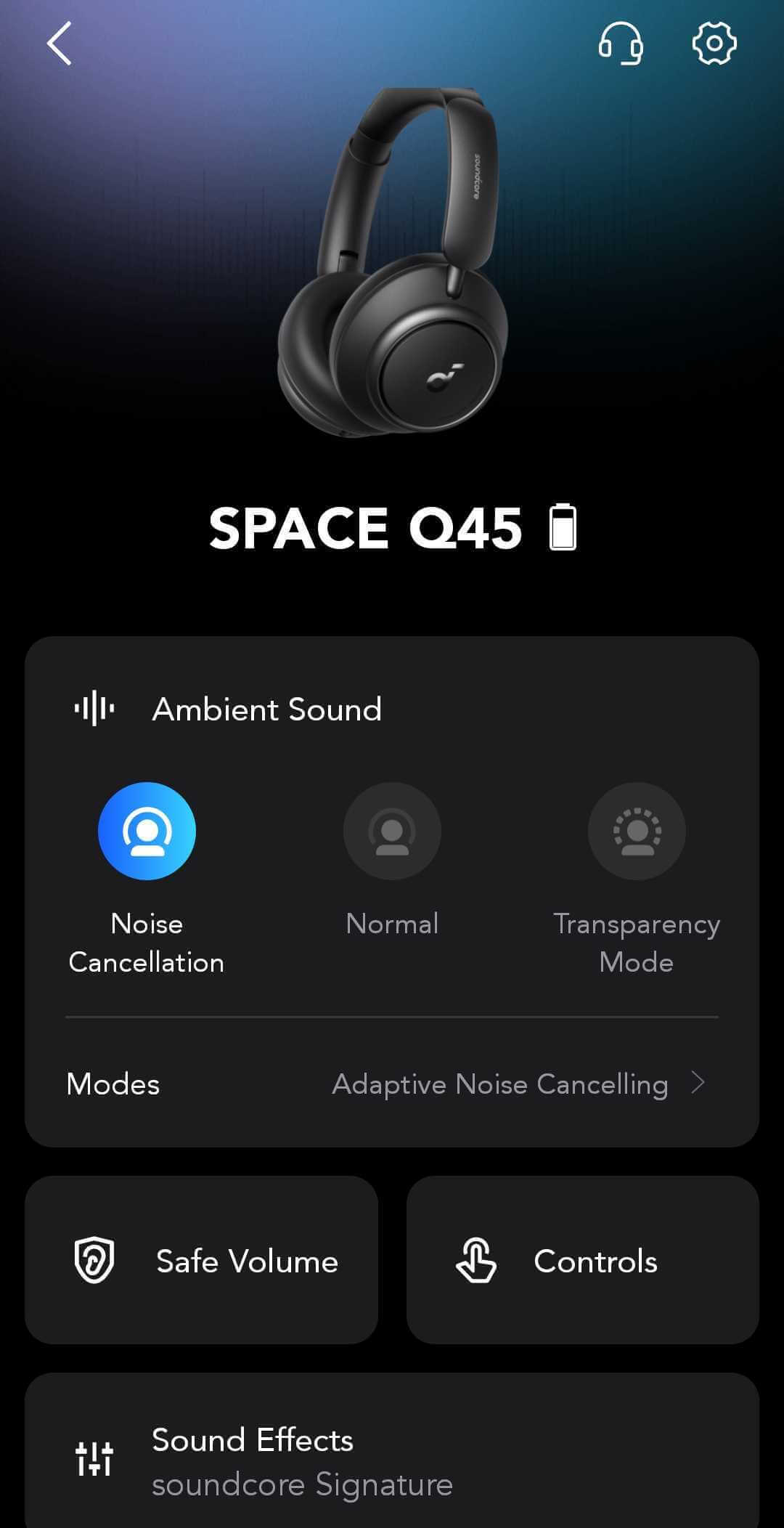
Firstly, at the top of the interface sits the noise cancelling modes. Switching between the modes is seamless, and the NC & Transparent tabs have advanced options which allow you to control how intense the noise cancelling and transparency effects are.
Both the NC & Transparency tabs function smoothly. I have previously read how the Soundcore app is a bit fiddly, but this has not been my experience. I’m a big fan of the app and its reliability, acting as a functional counterpart for the headphones.
I don’t think a detailed review of the app is overly necessary because there isn’t much to it. I think its main purpose is to make make the noise cancelling options more accessible (remember how I said people like me get mentioned with technology quickly?) and I think it does this spectacularly!
It offers a few other settings, including the option to map the “BassUp” feature to the NC button on the headphones. As I have said before, this setting does add a lot of weight to the low-end, but it can get a little boomy. Either way, the app makes it easy to engage, and you can tell the headphones to engage “BassUp” by pressing the NC button twice.
Finally, Soundcore gives you the ability to create your own sound profile for the headphones. Known as SoundID, the app plays a number of tones at different frequencies which tests what you can and can’t hear. Then, the app plays a track with various filters applied and asks you which sounds the best to you. Once completed, the app then makes you a custom sound profile.
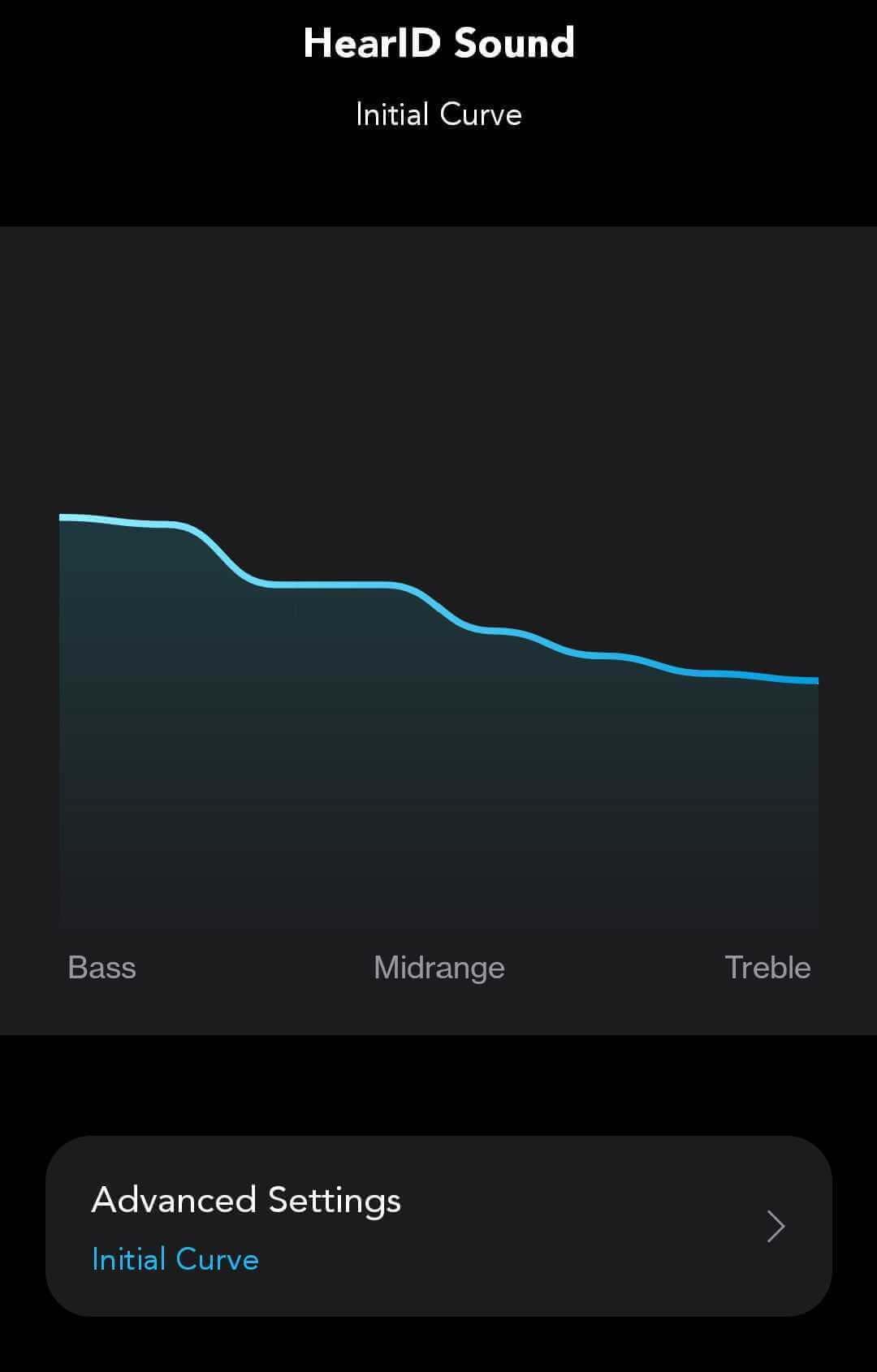
My experience with my sound profile was enjoyable, but I don’t think it added any value compared to the normal listening modes. But I know that this feature will be valuable to a lot of other people, particularly older people whose hearing has begun to degenerate.
All in all, the Soundcore app is a very useful accessory for the Space Q45 headphones. It’s super simple to use, lets you access the noise cancelling modes easily, and it visually presents how loud your music!
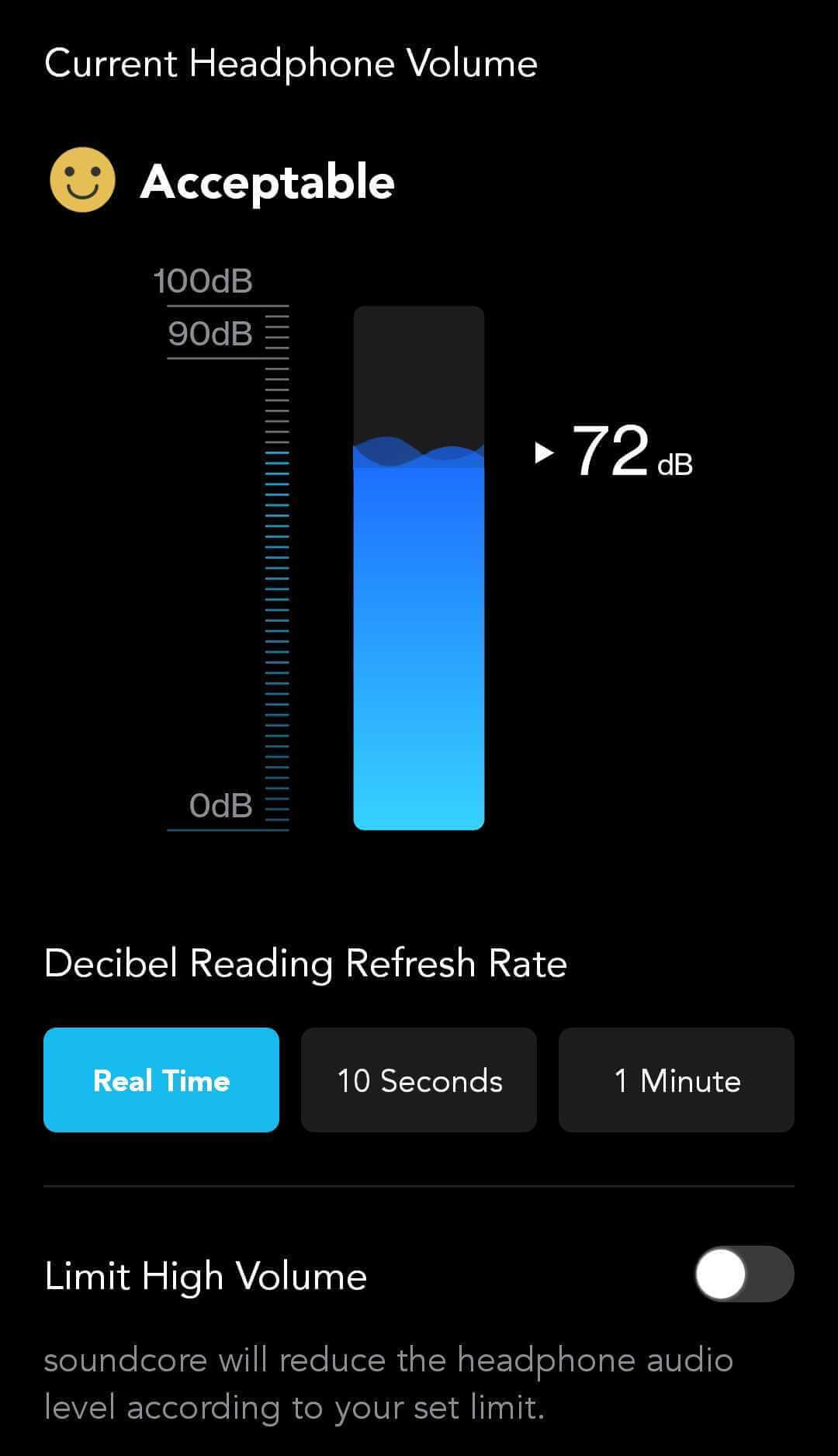
Conclusion
In conclusion, the Soundcore Space Q45 headphones are pretty stylish and very comfortable to wear. The pressure on your skin from the synthetic leather pads is almost unnoticeable over long listening sessions, and the onboard buttons put every important control (play/pause, volume, etc.) at your fingertips.
Coupled with their ergonomic design, the long battery life make these headphones a great choice for day-to-day commuting & long journeys. Additionally, the headphone employs fast charging, and Soundcore promise you can get 4 hours of playtime after just 5 minutes of charging!
Nevertheless, the only thing that let me down with these headphones was the inconsistent sound quality. As someone that listens to a lot of musical genres, I was underwhelmed when the headphones didn’t deliver the punch a metal song should or the consistent balance of frequencies I am used to with electronic music. However, these headphones absolutely shine when listening to pop music – vocals, instruments, bass, effects, and everything else cut through the mix as they should.
Therefore, if you’re an ardent fan of pop music then the £139.99 price tag of the Space Q45 headphones are definitely worth it for you.
Don’t forget to use our exclusive discount code – RouteNote2023UK – to get a £20 discount (valid until June 30th)!
Soundcore Space Q45 rating: ⭐️⭐️⭐️⭐️

